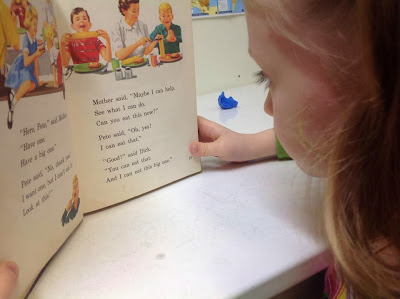How Can We Improve Reading Comprehension?
 “How can we improve reading comprehension?”
“How can we improve reading comprehension?”
“How can I get my child to remember what they read… not just read and forget?”
Do these struggles sound familiar? You are not alone! Many of our readers have shared that their educational goals for their child this year includes upping the ante on reading comprehension. Why is it happening and how do you fix it?
Have you ever been reading and noticed you have no idea what the last paragraph was or maybe even the last two pages? You fell asleep at the wheel! You blanked out. It’s a little embarrassing but as adults, we know to go back and read and reread until we get it. Kids can have the same issues with reading comprehension and it’s really embarrassing for them, especially when they get called on in class or their grades are on the decline. Unfortunately they don’t understand what’s happening or why.
When reading, right brain people often have gaps, where they didn’t catch all details. The left side of the brain loves words, but when the right side is in charge, it needs to take breaks to turn the words into pictures it can remember. The brain literally turns off every so often to translate what it’s been hearing or reading, into pictures. When it gets what it needs it reengages and turns back on again. But during the off times – something got missed. There are comprehension problems because there are gaps in what was received by the brain.
Here are three ways to help visual, right-brained kids improve their reading comprehension and increase test scores:
Pictures. Pictures. Pictures.
Never underestimate how much better the right side of everyone’s brain works on pictures. And the more right brain the reader is, the more they need to see what they’re reading. Add pictures to the text. Or take frequent breaks to give readers time to develop the mental pictures they need.
Plan Understanding breaks
Whether you’re 7 or 17, visual learners need to plan breaks while reading. Just pushing through to keep up with the group isn’t going to do anybody any good. Pause once in a while to think about what you just read. Having more understanding will help you enjoy what you’re reading so much more. If you’re one of the MANY parents who is noticing your child struggle with this, work with him to find that balance, is it ten minutes of reading? Or maybe it’s five minutes and then an understanding break… time will vary child-to-child and possibly subject-to-subject.
Read. Write. Talk. Draw.
During those understanding breaks encourage your child to show what they know, in the way that’s most comfortable to them. Older readers may want to make a few notes. Younger kids may want to talk about what they read or draw a picture that helps them remember. Everybody learns and thinks differently so encourage them to do it in a way that works best for them. Be sure to make this a natural conversation, not another quiz or test they need to pass.
Because so much learning is dependent on reading, it’s an issue for any child to not remember what they read. But for right brain visual kids the problem is not in what they know or don’t know – it’s about how their brain works. With a little more attention spent on developing their comprehension skills your child will be able to develop habits that will benefit them long into the future.










